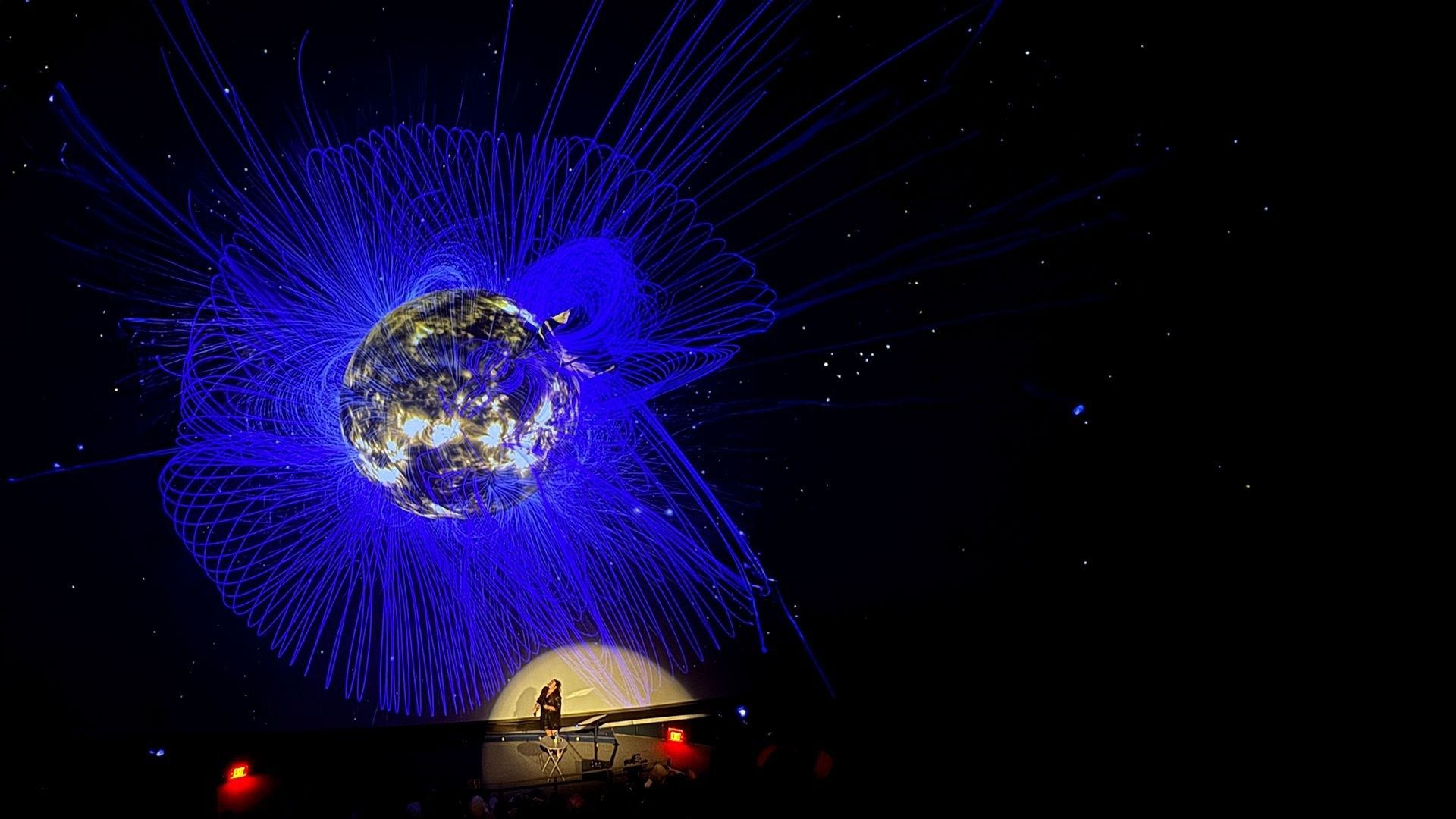«Мне нравится знакомить гостей с новыми местами и в режиме реального времени объяснять им явления, которые они наблюдают».
Доктор Бекка Робинсон — астрофизик, исследователь и вдохновляющий популяризатор науки, которая превращает сложнейшие тайны космоса в понятные каждому истории. Она участвовала в миссиях MUSE NASA, работала с ледяными кернами в Исландии, преподавала на арктических станциях и теперь делится своим с опытом с гостями Swan Hellenic. Её лекции на борту отражают глубокое убеждение: исследование и образование всегда идут рука об руку. Читайте дальше, чтобы узнать, как началось её увлечение Солнцем, что северное сияние может рассказать нам о звёздах и почему в каждое путешествие она берёт с собой веточку норвежского вереска.
Бекка, что впервые пробудило твой интерес к Солнцу?
Бекка: Мне всегда было близко ощущение взаимосвязанности всего сущего — ведь наше отношение к Солнцу имеет значение, даже если мы редко об этом задумываемся. Меня завораживает взаимодействие плазмы и магнитных полей, рождающее солнечные вспышки, и то, как магнитное поле Земли отвечает на них, защищая нас и создавая магию полярных сияний. Эта связь одновременно поэтична и физически ощутима. Мне нравится исследовать, как одно и то же явление может быть и математически точным, и эмоционально возвышенным — это напоминание о глубоко человеческой природе науки.
Как твоя работа в Институте SETI связана с любовью к исследованиям?
Бекка: Институт SETI был основан людьми, чья жизнь пронизана жаждой открытий. Я горжусь тем, что продолжаю их путь. Моя цель — делать сложное понятным и вдохновляющим. Я верю, что в каждом из нас живёт естественная любознательность, и если её пробудить, она становится источником познания. Если хотя бы один человек после моей лекции начинает смотреть на небо с интересом — значит, всё было не зря.
Что делает миссию MUSE такой захватывающей?
Бекка: Multi-slit Solar Explorer (MUSE) — это новый космический аппарат NASA, созданный для изучения «спектра» солнечного света — своеобразного отпечатка, в котором зашифрована информация о температуре, скорости, составе и турбулентности солнечной плазмы. Обычно спектры измеряются с помощью одной тонкой щели, которая сканирует Солнце в поисках таких явлений, как солнечные вспышки, но одна щель не может зафиксировать полную эволюцию вспышки, независимо от того, как быстро она движется. MUSE использует 35 щелей одновременно, благодаря чему мы можем наблюдать весь процесс эволюции вспышки во времени и пространстве. Это прорыв: теперь мы способны понять, как именно рождаются солнечные бури и даже предсказывать их заранее, что имеет важное значение для прогноза космической погоды на Земле.
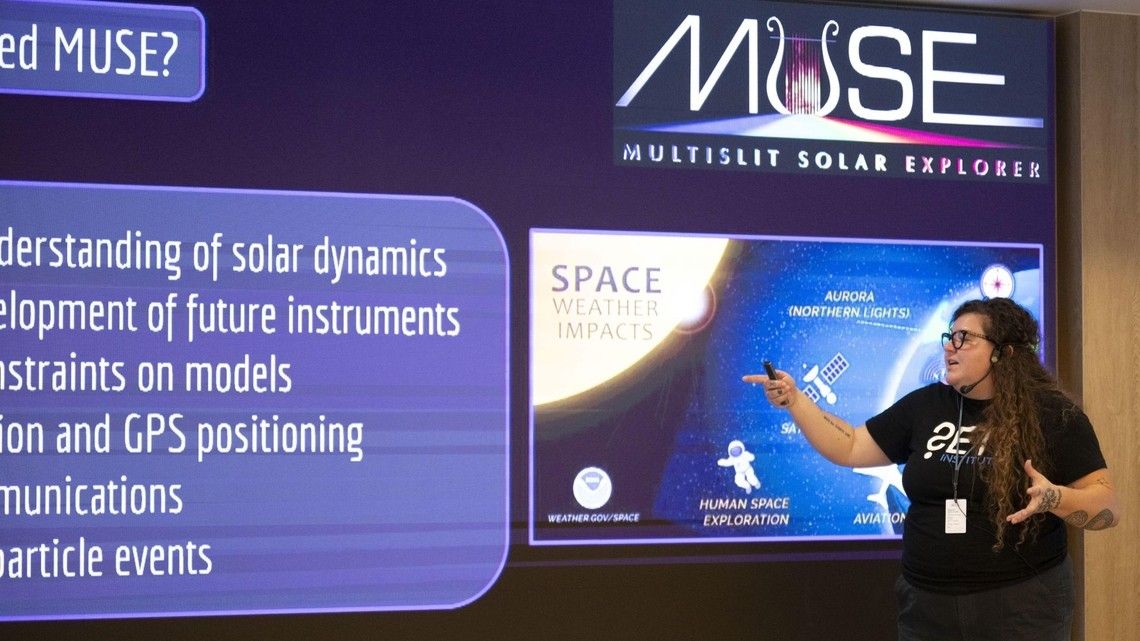
Путешествие, которое меняет жизнь
Вы много путешествовали по работе. Была ли среди этих поездок такая, которая изменила вас?
Бекка: Да, незадолго до защиты диссертации я посетила конференцию Международного астрономического союза в Ереване. Эта поездка изменила многое. Я открыла для себя удивительную астрономическую историю Армении и познакомилась с учёными, с которыми иначе, возможно, никогда бы не пересеклась. Это стало напоминанием о том, что наука не знает границ и развивается наиболее быстрыми темпами, когда мы сотрудничаем и делимся знаниями.
Как ваш арктический опыт влияет на вашу работу в области солнечной науки?
Бекка: Верьте или нет, но эти виды деятельности тесно связаны между собой! Ледяные керны, которые мы пробурили в Исландии, послужили исходными данными для компьютерного моделирования движения ледников, а это движение дает основу для понимания того, как движется энергичный газ на Солнце. В обоих случаях всё сводится к динамике жидкости — просто лед и плазма подчиняются разным законам.
Как жизнь в Норвегии и работа в таких отдаленных местах, как Шпицберген, повлияли на ваше мировоззрение как ученого?
Бекка: Темп жизни в Скандинавии отличается от других мест. Здесь уделяется большое внимание уходу за собой, что способствует развитию культуры заботы о сообществе, а также работе, отдыху, потреблению и существованию в устойчивом темпе. Жизнь там научила меня более тщательно и гибко расставлять приоритеты в своем времени, и благодаря этому я создала более прочную основу для удовлетворения своих основных потребностей. Удовлетворив эти потребности, я смогла посвятить себя научной работе, находясь в более стабильном состоянии — как физически, так и психологически. Работа важна, но она не будет выполнена, если я не позабочусь о своих основных потребностях. И чтобы быть надежным членом любой группы, например, моей исследовательской команды, я должна сначала позаботиться о себе. Проще говоря: если я в порядке, то и все мы в порядке.
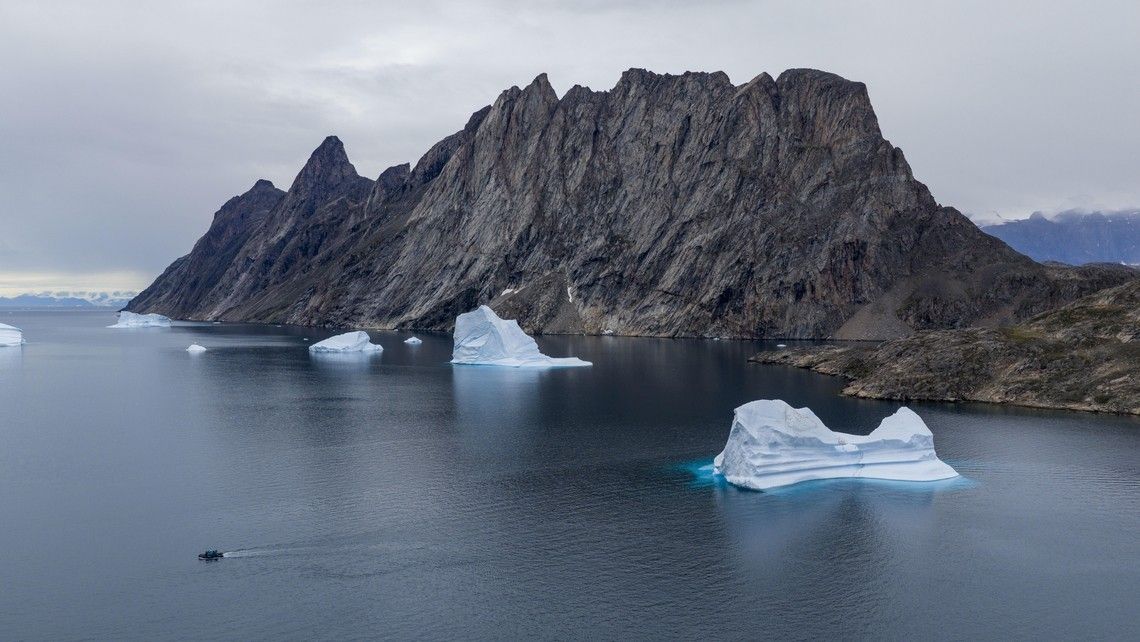
Сделать науку доступной
Что побудило вас стать лектором в круизах Swan Hellenic?
Бекка: Ранее я уже работала на арктических экспедиционных судах, поэтому знала, что этот формат идеально мне подходит. Мне нравится знакомить гостей с новыми местами и в реальном времени рассказывать им о явлениях, которые они наблюдают. Это не просто лекции — это живое взаимодействие с миром вокруг. Для многих пассажиров это возможность впервые по-настоящему понять, что значит жить в Арктике, как устроены природные системы, и почему они столь уязвимы. Такое понимание неизменно приводит к более глубокому уважению и восхищению природой.
Как вы делаете астрофизику интересной для гостей круиза?
Бекка: Мой главный инструмент — это визуальные образы. Я редко использую много текста — только короткие подписи, которые помогают понять, что именно изображено. Главное — показать красоту науки и дать почувствовать её масштаб. Я стараюсь найти золотую середину: не упрощать до банальности, но и не усложнять настолько, чтобы потерять внимание аудитории. К счастью, астрофизика щедра на впечатляющие картины — от солнечных вспышек до сияющих галактик. Когда люди видят это своими глазами и понимают, что именно они видят, — наука перестаёт быть абстракцией и становится личным открытием.
Какой был ваш самый сложный опыт в области просветительской деятельности — и что вы из него смогли вынести?
Бекка: Самым трудным для меня временем стал период пандемии COVID-19, когда вся просветительская деятельность перешла в онлайн-формат. Я записывала научные видео для YouTube и TikTok, и, конечно, это открыло новые возможности — я могла общаться с аудиторией по всему миру, вдохновлять людей, которых никогда бы не встретила лично. Но мне не хватало живого взаимодействия — эмоционального отклика, любопытных взглядов, вопросов из зала. Для меня это и есть настоящая наука — не только делиться знаниями, но и чувствовать связь с теми, кто их получает. Когда мы наконец вернулись к живым лекциям, я поняла, насколько ценна личная встреча. Этот опыт научил меня адаптироваться, но и напомнил: ничто не заменит силу человеческого присутствия и живого диалога.
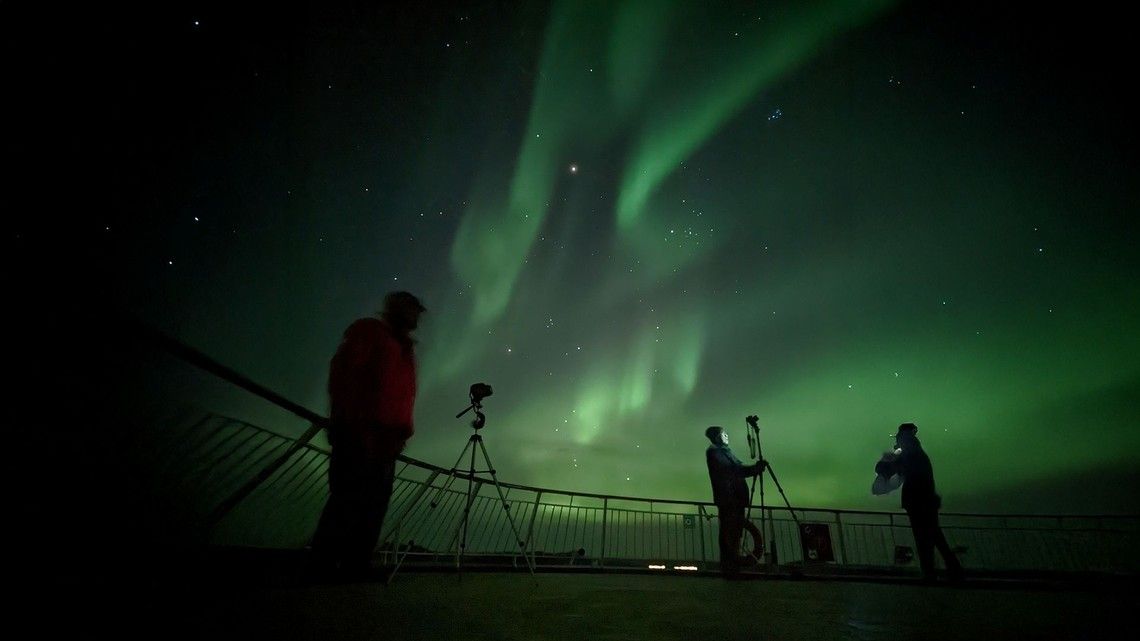
Аврора и атмосфера
Есть ли история о Солнце, которая особенно завораживает вашу аудиторию?
Бекка: Да! Пожалуй, самая любимая история — это событие Каррингтона 1859 года. Многие слышали о нём хотя бы краем уха, и неудивительно: это одно из самых впечатляющих проявлений солнечной активности в истории. Тогда Солнце выбросило в космос мощнейший поток плазмы, направленный прямо к Земле. Когда этот поток достиг нашей планеты, он вызвал электрические токи в земной коре, из-за чего по всей территории США перестали работать телеграфы. Но самое удивительное — это последствия: северное сияние наблюдали даже в Колумбии, а южное — на севере Австралии, в Квинсленде. Если бы подобное событие случилось сегодня, оно могло бы парализовать наши энергетические и коммуникационные сети по всему миру. Поэтому изучать Солнце важно не только ради любопытства — это ключ к пониманию и защите нашей цивилизации.
Как участники полярных круизов могут увеличить свои шансы увидеть полярное сияние?
Бекка: Прежде всего, важно выбрать правильное время года. Летом в полярных регионах слишком светло — сияние просто невозможно увидеть, даже если оно активно. А вот в полярную зиму или в межсезонье, вероятность увидеть северное сияние возрастает многократно. Когда станет достаточно темно, чтобы увидеть полярное сияние, наберитесь терпения. Северное сияние часто начинается с бело-зеленой дымки на севере, а затем принимает форму четких арок и вихрей. Если вам кажется, что вы видите слабое полярное сияние, но не уверены, сделайте фотографию с длинной выдержкой. Если дымка получится зеленой, вы стали свидетелем одного из самых завораживающих явлений природы.
Есть ли у вас любимое солнечное явление, о котором вы хотели бы рассказать большему количеству людей?
Бекка: Да, я бы хотела, чтобы больше людей понимали, что северное и южное являются прямым результатом магнитной активности Солнца. Когда солнечные вспышки выбрасывают заряженные частицы в космос, они достигают магнитного поля нашей планеты, и именно это взаимодействие рождает сияние — то самое волшебное свечение, которое мы видим в полярном небе. Когда я рассказываю о северном сиянии в Арктике, я всегда начинаю с рассказа о Солнце. Люди часто не задумываются о его влиянии, воспринимая его просто как источник света и тепла. Но на самом деле мы живём в постоянном диалоге с Солнцем — каждая вспышка, каждый поток энергии отражается на нашей планете. Я надеюсь, что мои лекции помогают людям увидеть эту тонкую.
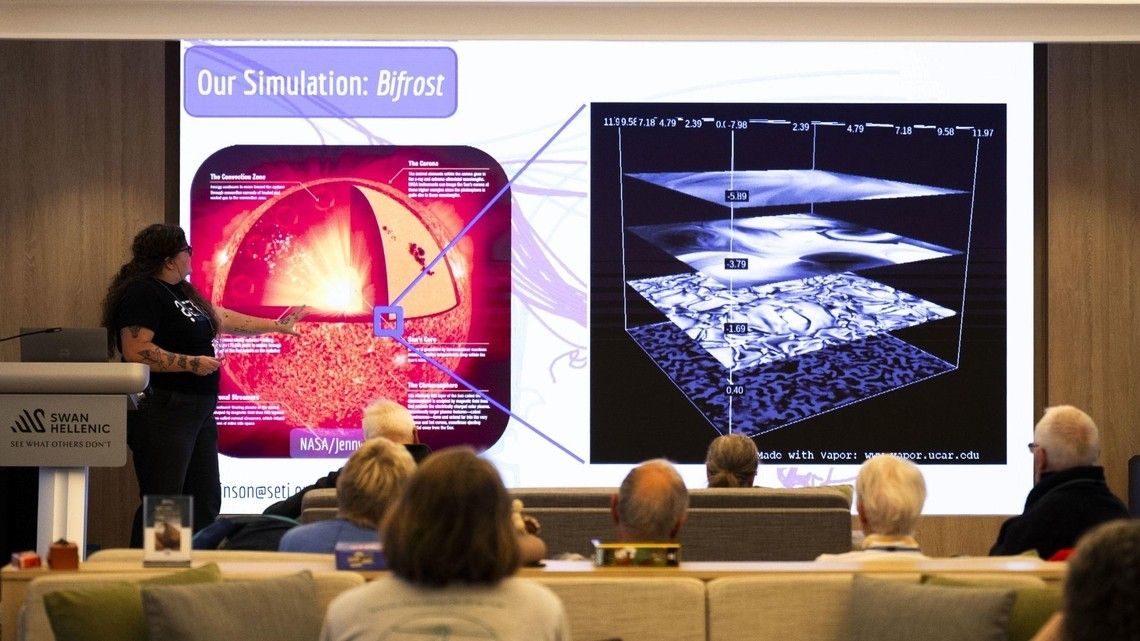
В погоне за чудесами, налаживая связи
Как коллекционер камней и наблюдатель за звёздами, что привлекает вас в путешествиях?
Бекка: Когда я открываю для себя новое место, я стараюсь прочувствовать его через природу и вкусы. Для меня культура — это прежде всего земля и еда, то, как люди заботятся о своей окружающей среде и что они ставят на стол. Эти два аспекта рассказывают о народе больше, чем любые книги или музеи.
Вы работали астрофизиком в Национальном парке Бэдлендс. Что вам запомнилось больше всего?
Бекка: Мне понравилось ощущение гармонии между научной работой и природой. Представьте — вы рассказываете о звёздах под бесконечным ночным небом, где всё вокруг кажется частью той же Вселенной, о которой вы говорите. Нет лучшей аудитории и лучшей «классной комнаты», чем сама Вселенная.
Какой вопрос вы хотели бы, чтобы вам задавали чаще?
Бекка: Наверное, «Какие навыки выживания вы приобрели?» — особенно от молодых людей, которые только начинают свой путь. Я бы ответила так: Развивайте свои навыки целенаправленно и используйте их, чтобы приносить пользу миру. Будьте гибкими и креативными — жизнь часто подбрасывает неожиданные задачи. И самое главное — создавайте связи и доверие. В науке, как и в путешествиях, важно не только то, что вы знаете, но и с кем вы идёте по этому пути. Когда вы доверяете себе и людям вокруг, даже самые сложные препятствия превращаются в возможности.
Что больше всего удивляет людей, когда они начинают изучать Солнце?
Бекка: Самое простое и в то же время самое удивительное — осознание того, что Солнце — это звезда. Не все сразу воспринимают это, ведь на небе оно выглядит совсем не так, как звёзды ночью. Но именно так: Солнце — это ближайшая к нам звезда, вокруг которой вращаются Земля и другие планеты. Мы видим его таким ярким потому, что оно гораздо ближе к нам, чем все остальные звёзды во Вселенной. Когда наша часть планеты поворачивается к нему — начинается день, когда отворачивается — наступает ночь. Всё просто, но в этом простом кроется нечто грандиозное: мы живём под светом настоящей звезды.
Если бы вы могли пригласить одного учёного-историка в путешествие на лайнере Swan Hellenic, кто бы это был?
Бекка: Она, к счастью, ещё жива — профессор Дейм Джослин Белл Бернелл. Во время работы над докторской диссертацией она открыла быстро пульсирующие звезды (называемые пульсарами). Это открытие стало одним из величайших в астрономии XX века, но Нобелевскую премию за него в 1974 году получил её научный руководитель. Я встретила Джослин, когда была молодой студенткой, полна сомнений и тревог относительно будущего. Она тогда сказала мне несколько простых, но очень мудрых слов, которые я запомнила на всю жизнь. Если бы у меня была возможность пригласить её в путешествие, я бы показала ей, над чем я сейчас работаю, кем стала как человек и как учёный. И сказала бы ей то, что она когда-то сказала мне: всё действительно будет хорошо.
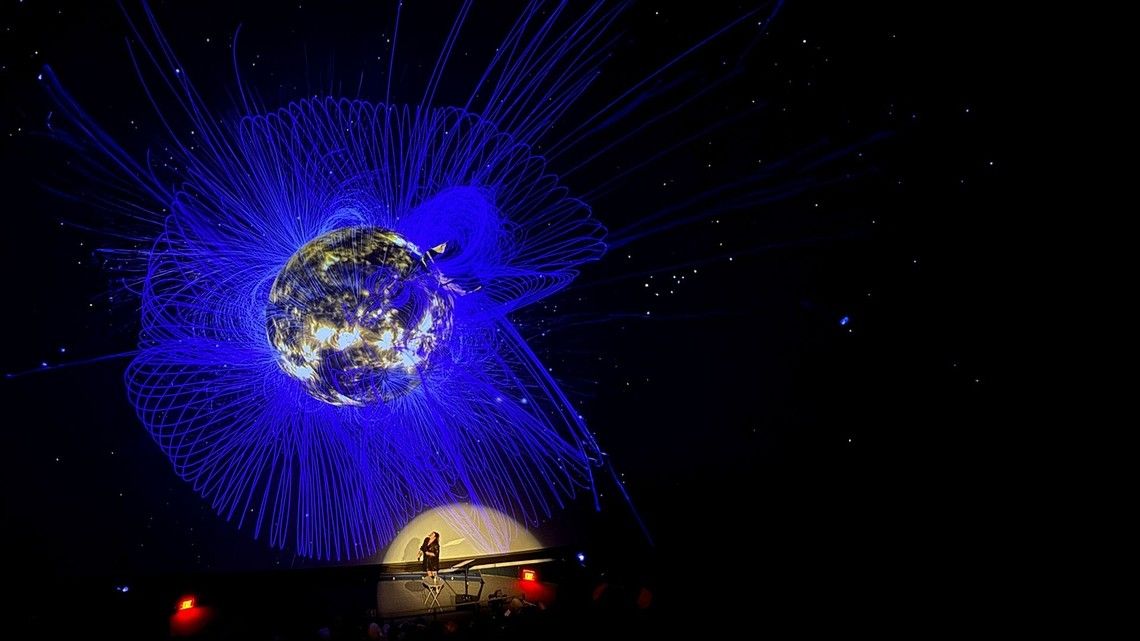
Созвездия и маленькие талисманы путешествий
Что самое необычное можно найти в твоей экспедиционной сумке?
Бекка: Во время экспедиций я беру с собой сумку с сушеными травами. В ней — норвежский вереск, lyngblomst, собранный в лесах недалеко от моего дома. Эти травы не только идеальны для чая, когда я простужаюсь, но и напоминают о Скандинавии — о месте, где я чувствую внутреннее равновесие. Для меня это маленький кусочек дома, который я беру с собой в любое путешествие.
Где ночное небо заставляет вас затаить дыхание?
Бекка: Хотя я родом из северного полушария, признаю — южное небо действительно поражает воображение. С того ракурса Млечный Путь виден во всей своей красе, а в южных широтах можно наблюдать Магеллановы Облака, две ближайшие к Млечному Пути галактики-спутники. Я впервые увидела их в Австралии, в Новом Южном Уэльсе, и этот момент до сих пор остаётся одним из самых волнующих в моей жизни.
Чего вы больше всего ждёте от предстоящего путешествия со Swan Hellenic?
Бекка: Я невероятно рада снова отправиться в Арктику — этот регион для меня словно второй дом. Там особый воздух, особый свет и особое ощущение присутствия. Я жду встречи с гостями, хочу делиться с ними историей этого края, помогать увидеть и понять удивительную природу, которую мы будем исследовать. Дождь, солнце, лёд или снег — Арктика по-настоящему раскрывается тем, кто готов исследовать этот край с уважением к природе.
